SEO copywriting is the art of writing texts that appeal both to readers and to search engines. In 2025, it’s almost impossible to reach the top of Google without it – competition has grown, algorithms have become smarter, and users are far more demanding.
Imagine this: two online stores sell the same product. The first one has a plain product page with dry technical details. The second one features a detailed, engaging description, answers to common questions, honest comparisons, and useful tips. Which site do you think Google will rank higher? Exactly – the one where seo copy actually helps the user rather than just stuffing keywords.
In this seo copywriting guide, we’ll cover what is seo copywriting, why it matters for businesses and bloggers, how to write articles that reach the top results, the most common mistakes to avoid, and seo copywriting best practices you can apply right away. You’ll also get step-by-step instructions, seo copywriting tips, recommended tools, and proven techniques to create seo friendly copywriting with real impact.
What Is SEO Copywriting?
SEO copywriting meaning can be defined as the process of creating texts that both attract readers and meet search engine requirements. Put simply, it’s about writing content that boosts rankings while solving the audience’s problems.
Unlike traditional copywriting – where the main goal is to trigger emotion or push immediate action – copywriting for SEO blends marketing techniques with technical seo for copywriters elements such as keyword usage and on-page optimization.
Who Is an SEO Copywriter?
A seo copywriter is a professional who writes content to promote a website, balancing two directions at once:
- For users – making the content helpful, readable, and engaging, with a clear structure, examples, and visuals.
- For search engines – naturally embedding keywords, optimizing headlines, ensuring topical relevance, and managing internal linking.
Good seo copywriters understand Google’s algorithms, know how to select keywords, structure articles, and produce seo web copywriting that earns high ratings from both people and search bots.
Copywriting + SEO: How the Connection Works
Think of seo-copywriting as a bridge between the user and the search engine.
- Copywriting ensures the text is persuasive, useful, and engaging.
- SEO ensures the text can actually be found – through optimized keywords, headings, and meta descriptions.
For example, if you’re writing copy for SEO on the topic “How to choose a treadmill for home,” your article should answer user questions (“Which models are best for apartments?” “What features should I look for?”), while also integrating seo copywriting techniques like structured lists, optimized headlines, and long-tail queries.
Below is an example screenshot of an article on “How to choose a bike,” where headings not only answer the main question but also cover related ones (“Types of bicycles,” “Where to buy a bike,” etc.).
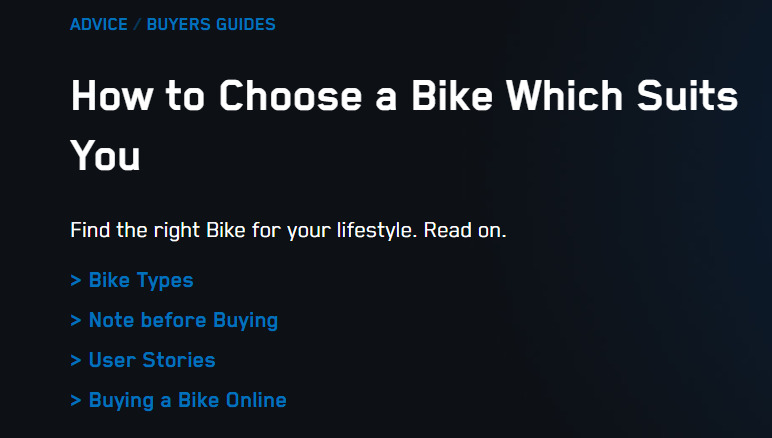
Typical SEO Copywriting Mistakes
- Only for search engines: A keyword-stuffed text, where the same query (e.g., “Bikes in New York”) repeats unnaturally many times.

- Only for readers: A text with no keywords at all, meaning it’s invisible for search engines.
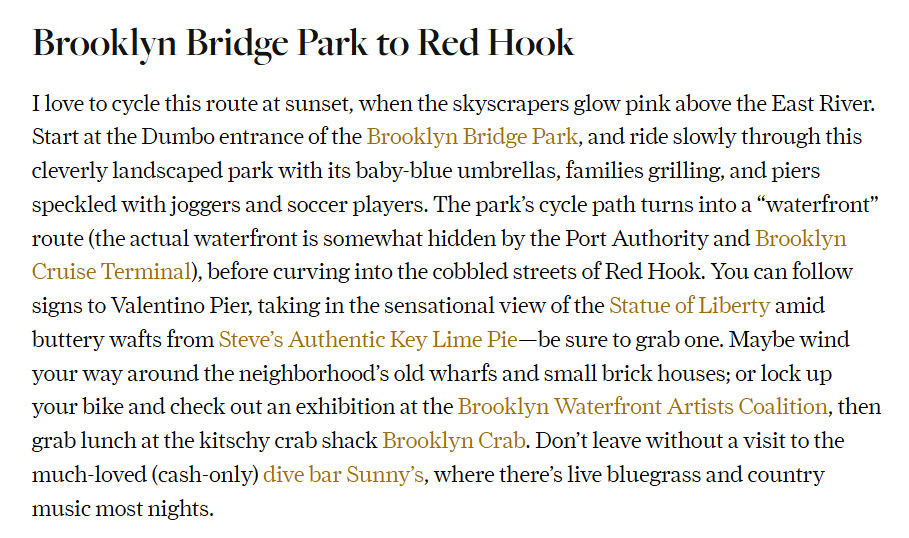
- Balanced content: A well-written article where keywords are naturally integrated, making it useful for both readers and search engines.

Why Is SEO Copywriting Important?
In short, website seo copywriting exists to connect user intent with your offer in a way that steadily drives targeted traffic from search – and converts it into leads, sales, or subscriptions. Properly designed search engine optimization copywriting addresses real user queries at every stage of the funnel, while also signaling to Google that your page is highly relevant.
Why Different Projects Need SEO Copywriting
SEO copywriting is not a “one-size-fits-all” text. An online store, a blog, a B2B service, a SaaS startup, or a local business – each has its own goals, audience, and funnel stage. That’s why seo friendly copywriting strategies should be tailored to the type of project.
| Project type | How seo copy helps | Key effects | Example |
|---|---|---|---|
| E-commerce (online stores) | Promotion of product and category pages for long-tail and mid-tail queries | Growth in organic traffic, higher conversions, reduced ad dependency | Product descriptions with embedded keywords + FAQ blocks on category pages |
| Media & Blogs | Attract new audiences with info articles and evergreen content | Higher engagement, subscriber growth, increased time on site | Series of articles targeting LSI keywords with internal linking |
| B2B & Services | Address informational queries, warm up leads before conversion | More leads, expert positioning, stronger brand trust | “How to choose…” guides, case studies, SEO landing pages |
| Startups & SaaS | Quick ranking for niche queries, clear product explanation | More signups, better retention, reduced CPL | SEO landing pages + articles on “how to solve a problem with the product” |
| Local Businesses | Optimize for geo-based queries and reviews | Higher local visibility, more calls and visits | “Service + district” texts + local news/blog articles |
How SEO Content Drives Traffic and Sales
- More relevant impressions
When your keyword set covers not just dozens of queries, but an entire cluster – from informational (“how to…”) to transactional (“buy…”, “order…”) – your site appears in search more often and for the right audience. This ensures a steady growth of organic traffic, even without ads. - Higher CTR and dwell time
Well-written headlines and meta descriptions catch attention in the SERPs, boosting CTR. A clear structure with subheadings, lists, and quick answers keeps users on the page longer – a positive behavioral signal that helps secure top rankings. - Better conversions
Copywriting for SEO isn’t just about keywords – it’s about sales. A text that includes social proof (reviews, case studies), strong offers, FAQ blocks, and CTAs is far more likely to drive micro-conversions: newsletter signups, cart additions, or lead forms. - Reduced ad spend
A properly optimized article can hold stable top-10 rankings for high-, mid-, and low-volume queries. That means traffic keeps coming for free, reducing reliance on Google Ads or social campaigns. - Stronger E-E-A-T
Google values content that shows Expertise, Experience, Authoritativeness, Trustworthiness. Publishing expert guides, author profiles with real photos, case studies, and earning mentions from other sources build trust and improve brand reputation. Learn more about E-E-A-T you can read here.
When SEO Copywriting Services Are Especially Valuable
- New websites – building a semantic core, setting up structure, creating first content hubs and metadata, launching a content plan.
- Stagnation – audits, re-optimization, updating snippets, clustering, and expanding around working topics.
- Competitive niches – hiring an expert seo copywriter for comparisons, alternatives, and market insights.
- New products – explanatory guides, use-case scenarios, FAQs, glossaries to capture long-tail demand.
- Migration/Redesign – rewriting outdated texts for new IA, preserving relevance and schema.
- Multiregional projects – transcreation for local queries and cultural codes, not just “word-for-word” translations.
Mini Case Study: Before & After SEO Copywriting
Before optimization
A category page had:
- One short generic description (3–4 sentences), no subheadings.
- ~600 monthly impressions.
- CTR: 1.8% – low, because the snippet didn’t match search intent.
- Conversion: 0.4% – few users reached checkout.
Weaknesses: text was “for show,” no internal linking, no FAQ, no schema markup.
After optimization
The team:
- Rewrote seo copywriting with keywords mapped to user intent.
- Structured content with H2/H3 headings, added a comparison table.
- Added FAQ with 6 real user questions.
- Implemented FAQ/Product schema for richer snippets.
- Built internal links to related categories and blog posts.
Results in 90 days:
- Impressions: ~3,400 (+466%).
- CTR: 4.9% (snippet became more attractive and relevant).
- Conversion: 1.6% (+300%).
- Share of organic leads: +38%, with no extra ad budget.
The key was not keyword stuffing, but aligning user intent with page structure. When content, visuals, and seo copywriting best practices work together, Google rewards relevance – and users find exactly what they need.

What Businesses Gain from Systematic SEO Copywriting
- Predictable growth of organic traffic
Systematic website seo copywriting means covering full keyword clusters – from high- to low-frequency queries – and building interconnected content hubs. This creates stable, predictable traffic growth across the site, not just for one page. - Higher conversion with sales elements
A skilled seo copywriter embeds conversion triggers into texts: social proof, offers, CTAs, comparison blocks. This reduces objections and accelerates decisions – turning content into a direct revenue driver. - Lower lead costs and reduced ad dependency
SEO copywriting for beginners often starts with cutting ad spend: once optimized, the site generates free leads, reducing reliance on paid channels. Strong rankings help even small businesses compete with big players. - Content as a long-term asset
Unlike ads that stop once the budget ends, high-quality seo web copywriting keeps working for months or years with periodic updates. Each optimized page becomes a business asset, attracting traffic, earning links, and strengthening the brand.
How SEO Copywriting Works
To understand how SEO copywriting works, you need to see it not as “writing text with keywords,” but as a systematic process that connects search engine algorithms with user intent. Everything matters here: from semantic research and structure to micro-details in formatting.
SEO Copywriting and On-Page Optimization
SEO copywriting is part of the larger search engine optimization system. If SEO is the engine, copywriting is both the fuel and the oil.
Google’s algorithms consider hundreds of ranking factors – but without relevant, high-quality seo content, even a perfectly optimized website won’t reach the top.
- SEO text optimization helps search engines “understand” the topic and relevance of a page.
- Copywriting makes this text engaging, persuasive, and valuable for humans – so they not only click through but also stay and convert.
Bucket Brigades: Keeping Readers Hooked
Bucket Brigades are short, catchy phrases that act as “bridges” between paragraphs. Their purpose is simple: don’t let the reader stop. They smoothly push the user toward the next idea.
These phrases are especially powerful in seoNg copywriting, where time-on-page is a behavioral ranking signal.
Examples of Bucket Brigades:
- “Here’s the thing…”
- “But wait, there’s more…”
- “And here’s why…”
- “Let’s break it down…”
- “You’re probably wondering…”
- “Now imagine this…”
Why they work:
- Break monotony – they stand out among long blocks of text.
- Spark curiosity – the reader wants to know what’s next.
- Create a dialogue – making the text conversational and easier to follow.
Example from the article “SEO for Startups: How to Grow Organic Traffic From Day One”:

Tip from LinkBuilder.com: Use Bucket Brigades at the start of a new paragraph or before key facts, stats, or examples – they guarantee higher engagement.
Title Modifiers: How to Boost CTR
Title modifiers are extra words or phrases that make headlines more specific, up-to-date, and attractive. They help stand out in search results and directly improve CTR (Click-Through Rate).
Common modifiers:
- “How to…”
- “2025” (current year)
- “Review”
- “Best”
- “Easy” / “Simple”
- “Quick”
- “Checklist” / “Guide”
- “Tips”
Examples:
- Without: SEO Copywriting for Online Stores
With: SEO Copywriting for Online Stores: Step-by-Step Guide 2025 - Without: How to Improve Website Text
With: How to Improve Website Text: 7 Easy Steps to Boost Traffic - Without: Email Marketing for Small Business
With: Email Marketing for Small Business: Best Practices 2025
Why this works:
- Freshness – “2025” signals up-to-date info.
- Specificity – numbers and “checklists” show structure.
- Value – words like “best,” “guide,” or “tips” promise ready-to-use insights.
- Clarity – modifiers make it obvious what the article delivers.

Tip from LinkBuilder.com: Test modifiers for the same keyword – sometimes swapping “Easy” for “Quick” can boost CTR by 10–15%.
Google’s Mechanics: What It Looks For
- Keywords and intent
It’s not about inserting keywords but answering the question behind them.
Example: the query how to write SEO articles expects a step-by-step guide, not vague advice. - Structure and hierarchy
Headings (H1–H3), lists, blockquotes, and tables help algorithms identify meaning. Clear structure improves UX and lowers bounce rates. - Relevance and depth
Google understands topics via LSI keywords (related terms). The deeper the coverage, the higher the chance of ranking in featured snippets. - Behavioral factors
Time on page, internal link clicks, and pogo-sticking are signals of value. A good seo text uses visuals, examples, and subheadings every 300–400 words to keep attention. - Internal linking
Links to relevant pages distribute authority and improve indexation.
Example: an article on seo sales copywriting may link to a guide on writing seo texts.
LSI Keywords: Finding and Using Them
Latent Semantic Indexing (LSI) keywords are related words and phrases that give context. They show search engines that your content is truly relevant.
Example:
- Main keyword: SEO copywriting
- LSI keywords: text optimization, keywords, SERPs, content marketing
How to find LSI keywords in Google:
- Enter your main query.
- Scroll to the bottom of the page.
- Look for “Related searches” – Google lists 8–10 phrases.
- Add relevant ones to your text and subheadings.
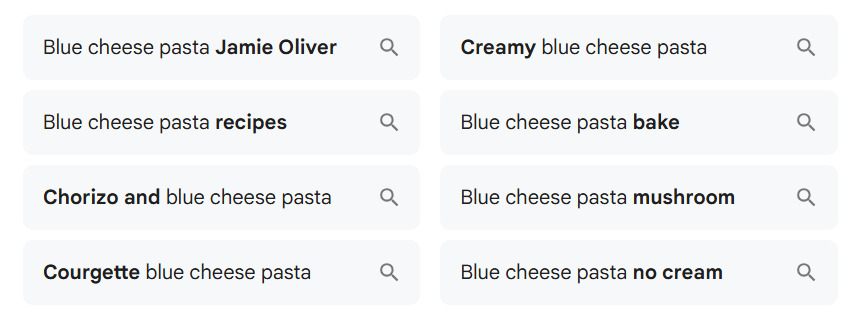
Tip from LinkBuilder.com: Tools like Ahrefs, Semrush, and Keyword Tool help too, but Google’s free method is a quick start.
Long-Tail Keywords
Long tail keywords are phrases with 3–4+ words. They reflect specific intent and attract more qualified users.
Example:
- Short keyword: SEO
- Long-tail keyword: how to write an SEO blog article
Why they matter:
- Lower competition than short keywords.
- Higher conversion rates – users are closer to action.
- Easier for new sites to rank in top 10.
Comparison:
- SEO → KD 85 (very high competition).
- SEO copywriting tips for beginners → KD 20–30 (lower competition, easier to rank).
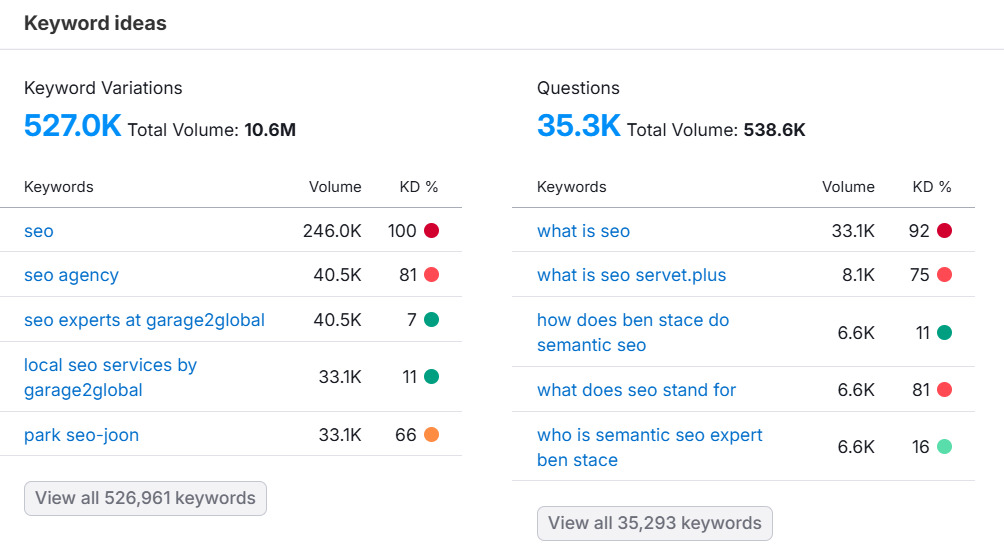
Tip from LinkBuilder.com: A long-tail keyword strategy is especially effective for niche blogs, e-commerce, and young websites aiming to rank faster.
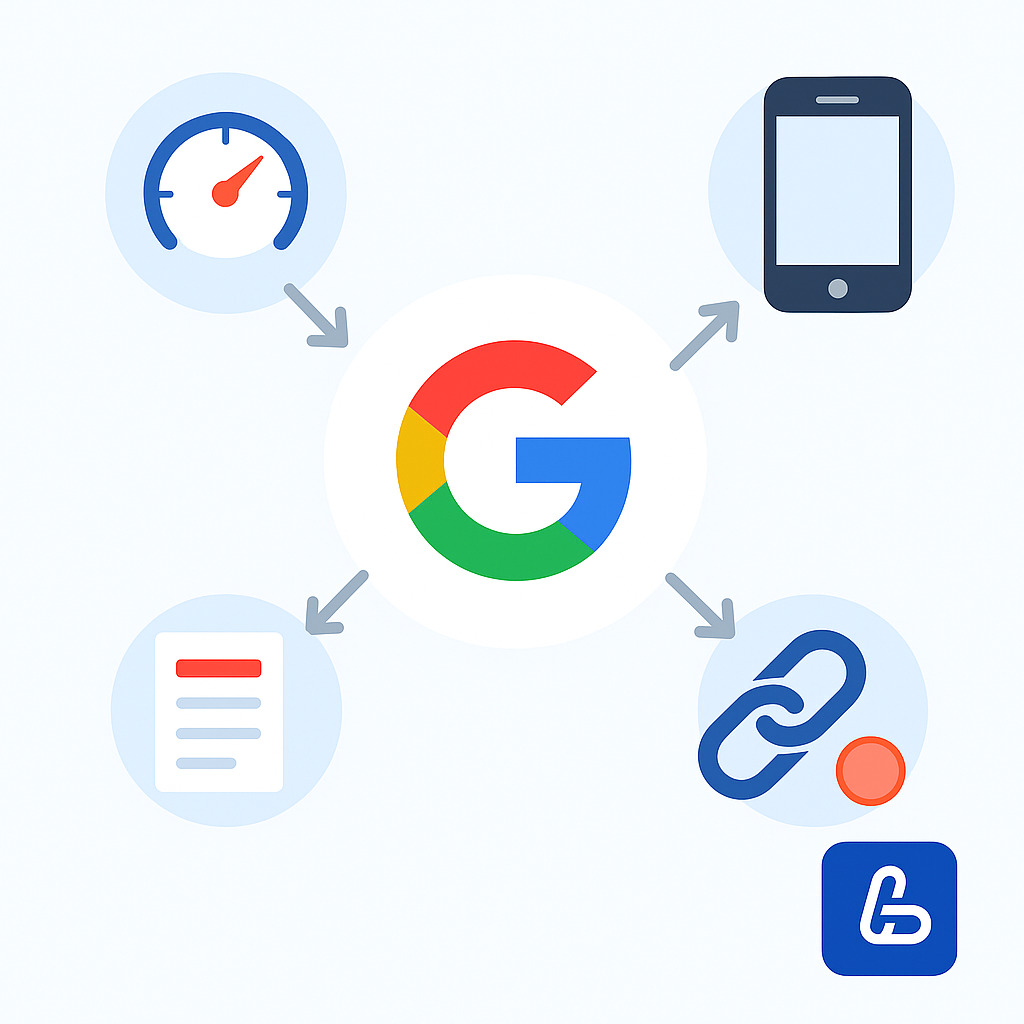
Why seo copywriting best practices are critical for Google
Simplify indexing
Logically structured headings and paragraphs allow bots to quickly understand the contentりと content and classify it correctly.
Build trust
Algorithms can see that the material is written for people – without keyword stuffing, but with examples, facts, and credible sources.
Give a competitive edge
In 2025 it’s no longer enough to simply add keywords – you need to answer user questions better and faster than competitors (core web vitals, clear structure).
For example, if a user searches for seo copywriting for beginners, Google expects:
- a simple definition,
- examples,
- basic steps,
- common mistakes,
- links to additional resources.
If your content covers all these elements in the right format, Google is more likely to rank it higher.
Step-by-step process: how to create SEO articles that rank
Here’s a practical roadmap – from research to publication. It includes templates, checklists, and concrete actions so you can apply the process immediately. Along the way, we’ll highlight seo copywriting tips, how to write seo articles, seo content, seo copy, and rules of seo copywriting.
Step 1. Audience and intent analysis
Goal: understand who searches for the topic, why they need it, and what format they expect.
Actions:
- Write down 2–3 JTBD (Jobs To Be Done), e.g. “I’m a marketer and I want to learn how to write seo articles to increase organic traffic without ads.”
- Define intent: informational, commercial, navigational, transactional.
- Example: for the query how to write copy for seo, the intent is informational + “guide + checklist.”
- Review top-10 SERP: note page types (guides, lists, FAQ, video), length, “People also ask” blocks, snippets.
- Record must-have elements: formulas, examples, templates, checklists, “common mistakes” section.
Output: a 5–7 point brief showing why your article beats the current top results.
Step 2. Keyword research and clustering
Goal: collect and group keywords so the article fully covers the topic.
Actions:
- Build a core: what is seo copywriting → expand with seo copywriting meaning, how seo copywriting works, why seo copywriting is important.
- Add “how-to” queries: how to write copy for seo, how to write seo articles, seo copywriting for beginners.
- Add transactional: what is seo copywriting services, hire seo copywriter, seo copywriting cost, seo for copywriters.
Cluster by intent:
- Definitions & basics.
- Practice & process (seo optimization of text, tools, structure).
- Commercial (services, pricing).
- Navigation/FAQ.
Output: keyword clusters with one “main” key per section + 3–7 supporting terms.
Step 3. Article structure
Goal: create a hierarchy of H1–H3 headings that beats competitors in depth and usability.
Actions:
- H1: match the search expectation exactly, e.g. “SEO copywriting: complete guide + simple explanation of what is seo copywriting.”
- Intro: answer “what/why,” promise value and a checklist.
- Sections follow clusters: definition → why → how seo copywriting works → process → tools → website seo copywriting → pricing & services → FAQ.
- Each section: provide examples, lists, or templates.
- Plan a snippet block: 40–55 words with a clear answer (e.g. seo copywriting best practices).
Output: article skeleton (outline) with notes on where to add visuals, lists, and templates.
Step 4. Writing the draft
Goal: produce expert, engaging, useful seo content that answers intent better than competitors.
Techniques:
- Inverted pyramid: give conclusions and steps first, details later (ideal for snippets).
- AIDA/PAS frameworks for motivational sections – perfect for writing copy for seo or seo copywriting for beginners.
- Micro-formatting: every 300–400 words insert a heading or list; 2–4 sentence paragraphs.
- Clear style: numbers, examples, no fluff; use mini-tables where possible.
- E-E-A-T: cite sources, add author experience, mini-case studies.
Output: a readable first draft that fully matches the brief.
Step 5. Optimization: headings, meta, semantics
Goal: polish seo friendly copywriting for publication.
Checklist:
- Title: 50–60 chars, main keyword first, benefit + trigger. Example: “SEO copywriting: how to write articles that rank – guide + checklist.”
- Meta description: 140–160 chars, include benefit, call-to-action, and keywords naturally.
- H2/H3: reflect clusters, include variations like seo copywriting guide, seo copywriting best practices.
- Keywords: 1–2 exact matches per block, rest are synonyms + LSI.
- URL slug: short, readable.
- Alt texts: descriptive, keyword-friendly, natural.
- Internal links: diverse anchors (exact, partial, branded, navigational).
Output: clean, optimized text ready for search.
Step 6. Visuals, schemes, examples
Goal: boost comprehension and engagement.
Add:
- Process diagrams (research → outline → draft → optimization).
- Tables: “Title/Description templates,” “Keyword clusters,” “Quality metrics.”
- Screenshots or mockups: e.g. structure for seo copywriting for beginners.
- Captions: help images rank in snippets.
- Tech details: webp, lazy-load, descriptive file names.
Step 7. Internal linking and content bridges
Goal: strengthen the page and guide users.
Actions:
- Link to supporting materials: “Guide to seo web copywriting,” “Beginner’s seo copywriting tips.”
- Add “What’s next” modules with 2–3 related posts.
- Use task-oriented anchors: “detailed checklist,” “seo copywriting examples,” “what is a seo copywriter.”
Output: a map of internal links by section.
Step 8. Final quality check & publication
Goal: ensure the article is index-ready and user-oriented.
Final checklist:
- Intent match: intro answers what/why/how.
- Completeness: all brief points covered.
- Readability: short paras, headings, lists, tables.
- Semantics: main keys like seo copy, seo copywriting tips, copywriting for seo appear naturally.
- Tech: optimized title/description, H-hierarchy, alt, schema FAQ.
- Indexing: add to sitemap, request crawl, internal links updated.
- Analytics: track CTR, dwell time, scroll depth.
After publishing:
- Update 2–3 older posts with links.
- In 2–4 weeks: adjust weak sections.
- Every 2–3 months: refresh stats and examples (critical for how to write seo articles).
Ready-made templates
Title examples:
- “SEO copywriting: how to write copy for SEO – step-by-step guide + checklist”
- “SEO copywriting best practices: structure, examples, mistakes”
Meta description examples:
- “Complete seo copywriting guide: structure, semantics, examples. Learn how to write seo articles that rank – without keyword stuffing.”
Process outline:
- H2: Step-by-step process – how to learn seo copywriting
- H3: Audience & intent
- H3: Keywords & clustering
- H3: Structure & snippets
- H3: Draft & examples (writing copy for seo)
- H3: Optimization & technical details
- H3: Internal linking (seo web copywriting)
- H3: Final checks & publication
Common mistakes in “best practices” and how to fix them
- Keyword stuffing. Fix: 1 exact key per block + synonyms/LSI.
- Long text walls. Fix: break up with lists, visuals, tables.
- Weak headings. Fix: add benefit + specifics + result.
- No quick answer. Fix: add 1–2 clear summary sentences at section start.
- Dead endings. Fix: “What’s next” modules + internal links.
SEO copywriting best practices are not about inserting more keywords – but about systematically covering user intent. A strong page should explain what is seo copywriting, show how seo copywriting works, outline steps for writing copy for seo, help algorithms understand context, and guide readers toward action. That’s how effective seo copy and seo content rank higher and bring real results.
Tools for SEO Copywriters
The right set of tools saves hours of work, helps to find the best keywords, optimize SEO copy, and track performance. Below is a selection of services that are essential if you want to write articles that reach the top rankings and build a systematic workflow.
1) Keyword Research Tools
Goal: Find the phrases users search for and integrate them into the text so it answers every query.
- Ahrefs – a paid tool with one of the largest keyword databases.
Use case: finding and clustering keywords, studying topics that drive traffic to competitors. - Semrush – similar to Ahrefs, with extended competitor and content-gap analysis.
Use case: identifying new entry points into a topic, analyzing seasonality and trends. - Google Keyword Planner – a free tool for checking basic keyword frequency and variations.
Use case: verifying the real search volume in Google. - AnswerThePublic – visualizes questions and phrases people actually type in search.
Use case: generating FAQ sections and AEO content.
2) Content Analysis and Optimization Tools
Goal: Make content highly relevant to the query, improve readability, and support optimization for Google.
- SurferSEO – analyzes top-ranking pages for a keyword and gives recommendations on text length, headings, and keyword density.
- Yoast SEO (WordPress plugin) – helps optimize titles, meta descriptions, structure, and keyword usage.
- Frase.io – focuses on creating content that answers user questions.
3) Link and Ranking Analysis Tools
Goal: Track how website SEO copywriting performs in search, what positions it holds, and how much traffic it brings.
- Ahrefs – backlink tracking with quality metrics (DR, UR).
- Serpstat – monitors keyword positions, website visibility, competitor analysis.
- Google Search Console – shows real queries that drive traffic, CTR, and ranking positions.
4) Visualization Tools
Goal: Make SEO-friendly copywriting attractive and engaging.
- Canva – quick way to create infographics, illustrations, and blog covers.
- Figma – for more detailed and professional graphic design.
Tip: Always add visuals to key sections – they increase time on page and chances of return visits.
5) Uniqueness and Quality Check Tools
Even original texts can sometimes get flagged for plagiarism due to common wording.
- Copyscape – English-language plagiarism checker.
- Plagscan – multilingual duplicate detection tool.
6) Workflow Management Tools
Goal: Build a process from research to publication.
- Notion or Trello – planning articles, tracking deadlines, storing keywords and structures.
- Google Drive – storing drafts, visuals, and keyword spreadsheets.
- Grammarly – grammar and style checker for English texts (useful if you work with multilingual search engine optimization copywriting).
Bottom line: Tools are accelerators. They don’t replace understanding what is SEO copywriting, but they make the process systematic – from keyword research and SEO copywriting best practices to publishing and performance tracking.
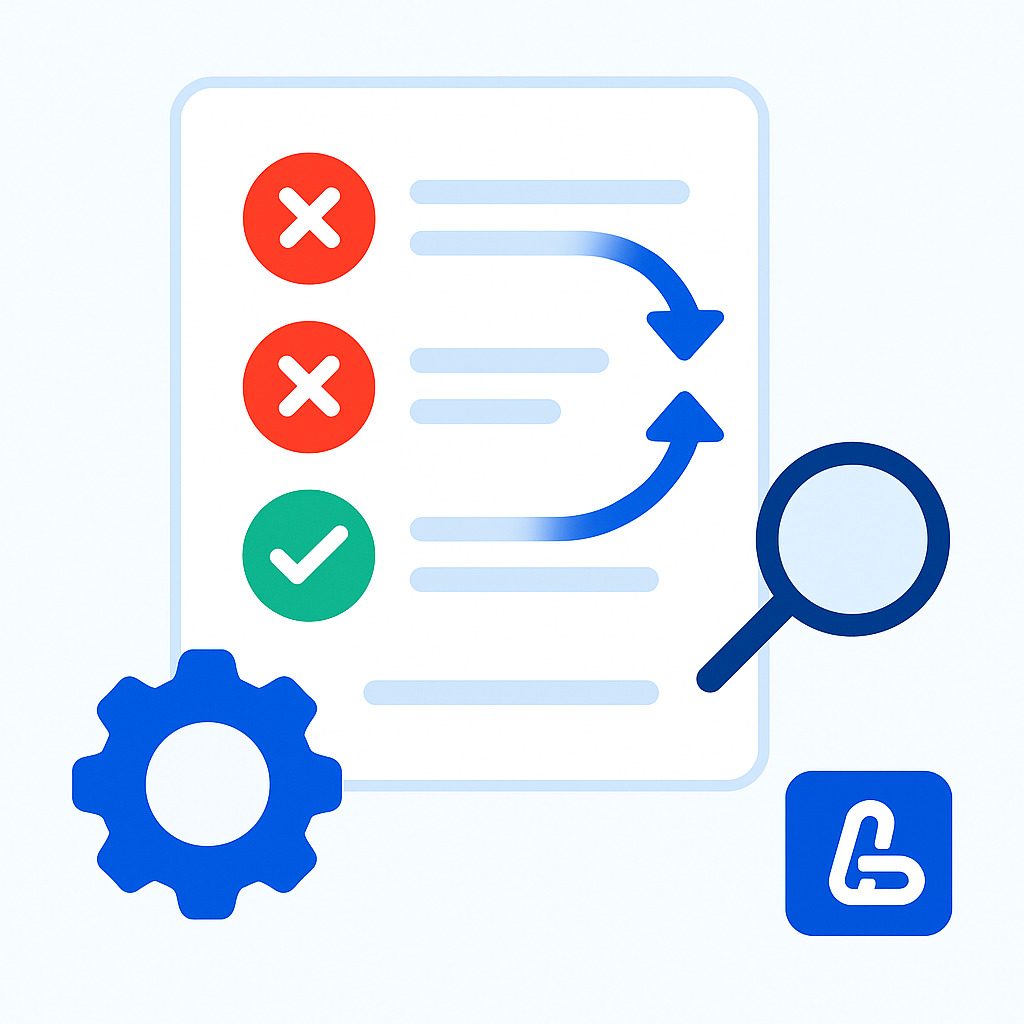
Common Mistakes in SEO Copywriting
Even experienced authors and marketers make mistakes when creating SEO copy. These issues not only prevent content from reaching Google’s top results but also damage brand trust and site reputation.
Here are the most frequent mistakes to avoid if you want to master copywriting for SEO and achieve sustainable results:
- Keyword Stuffing
Mistake: overusing the same query in the text to “please” algorithms.
Why it’s bad: modern search engines detect over-optimization and can penalize pages that break SEO copywriting best practices.
How to avoid:
- use keywords in different forms, mixed with synonyms;
- distribute them evenly (1–2 times per 1000 characters);
- include them naturally in headings and subheadings.
- Writing for Algorithms Instead of Readers
Mistake: content is written “for robots” – dry, no examples, no value.
Why it’s bad: SEO web copywriting must also be useful to boost behavioral metrics (time on page, depth, return visits).
How to avoid:
- focus on user pain points and questions;
- add examples, case studies, visuals;
- check if the article fully answers the search intent.
- Ignoring Structure and Formatting
Mistake: publishing walls of text without subheadings, lists, highlights.
Why it’s bad: readers scan content, and without structure, they leave quickly.
How to avoid:
- break content into logical sections;
- use bullet points and numbered lists;
- highlight important parts in bold or italics.
- Poor Use of Titles and Meta Descriptions
Mistake: H1 lacks a target keyword, meta description written “just to fill space.”
Why it’s bad: titles and meta descriptions directly impact CTR and page relevance.
How to avoid:
- add the target keyword in H1 and at least one H2;
- write meta descriptions like mini ads, including the keyword and a CTA.
- No Internal Linking
Mistake: the article is “isolated” from other site content.
Why it’s bad: internal linking distributes link equity and keeps users on the site.
How to avoid:
- link to other SEO-friendly copywriting guides;
- use keyword anchors where natural;
- ensure links lead to up-to-date pages.
- Ignoring Competitor Analysis
Mistake: writing without reviewing the top 10 results.
Why it’s bad: you may miss key subtopics Google considers relevant.
How to avoid:
- analyze competitor structure, headings, formats;
- add unique elements (data, visuals, interviews).
- Publishing Without Editing
Mistake: uploading content immediately after writing.
Why it’s bad: errors, fluff, or duplicate phrasing may remain.
How to avoid:
- review for readability, accuracy, and logic;
- optimize before publishing (headings, keywords, visuals, links);
- make sure the text matches the SEO copywriting guide and goals.
Bottom line: Avoiding these mistakes helps you create SEO copy that both readers and search engines love. And if you want to delegate – you can order SEO copywriting services from professionals who know what is SEO copywriting technique and how to get results.

Cost and Services of SEO Copywriting
SEO copywriting is an investment that directly impacts search rankings, organic traffic, and sales. Prices vary depending on quality, writer experience, and task complexity.
How Much Does SEO Copywriting Cost?
There are three main price ranges on the market:
- Budget segment – $3–10 per 1000 words.
Usually beginner writers or content farms. Suitable for simple informational pages, but high risk of generic or over-optimized texts. - Mid-range – $15–40 per 1000 words.
Here you’ll find experienced SEO copywriters who conduct basic keyword research, create logical structure, and follow SEO copywriting best practices. - Premium segment – $50+ per 1000 words.
These professionals integrate SEO analysis, competitor research, storytelling, visuals, and search engine optimisation copywriting. Such texts reach the top faster and hold rankings longer.
Important: price ≠ quality. The main measure is ROI – how much traffic and conversions the article generates, not just word count.
What Influences Price?
- Topic and niche complexity – legal, medical, and technical SEO copywriting costs more than lifestyle.
- Text length – long articles (5000–10000 words) cover more queries and rank better.
- Depth of SEO work – from keyword placement to full SERP, LSI, and snippet optimization.
- Deadlines – urgent work costs more.
- Expertise – senior SEO copywriters are priced higher than beginners.
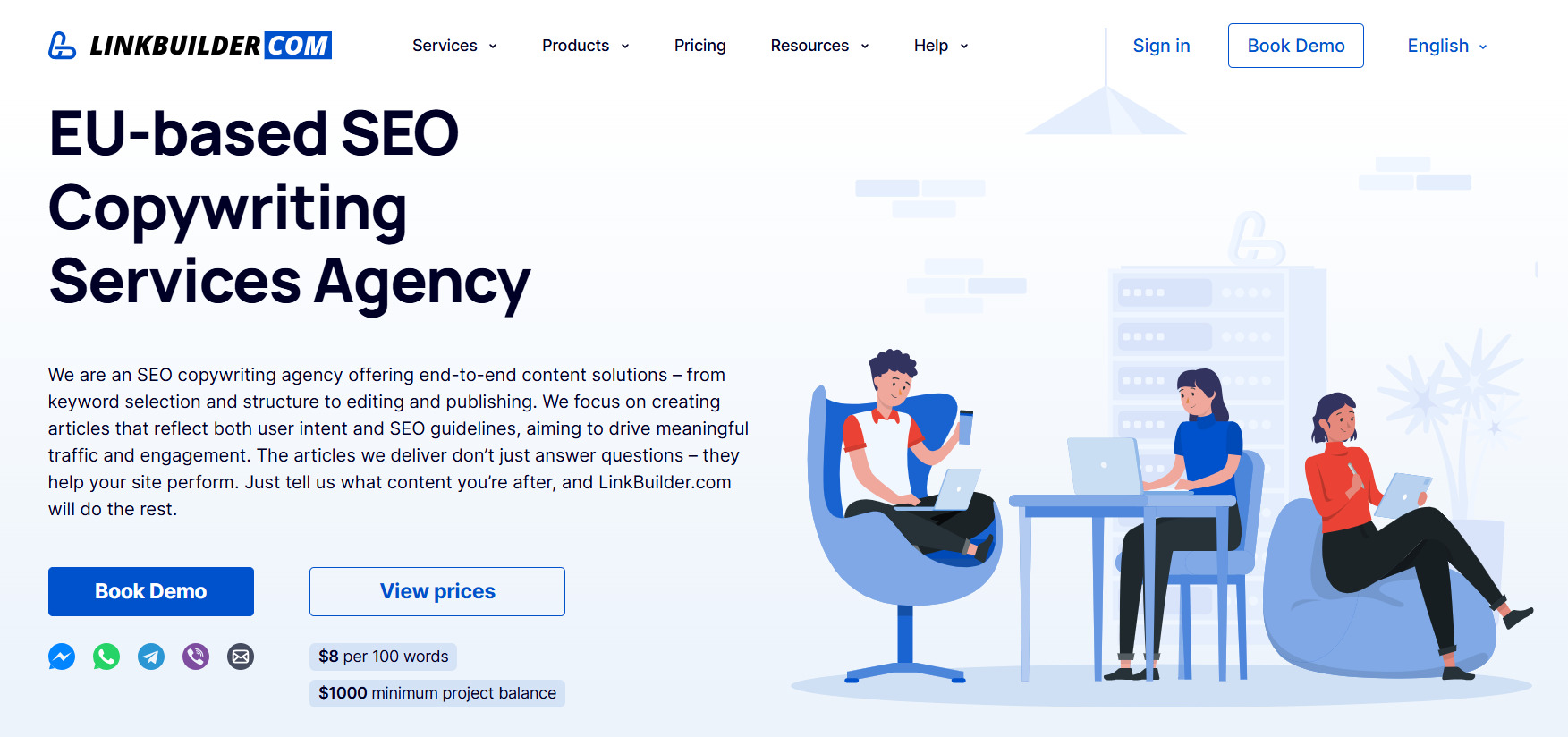
Our SEO Copywriting Services
At LinkBuilder.com, we provide a full-cycle SEO copywriting service designed for businesses that want consistent search traffic and top rankings in Google.
What We Do:
- Analyze the niche and search demand.
- Cluster keywords (following SEO copywriting rules).
- Build article structure and content plan to cover maximum queries.
- Write texts that are easy to read and optimized for search engines.
- Optimize titles, subheadings, and meta descriptions.
- Integrate SEO copy into internal linking.
- Prepare content for publishing with visuals and links.
Why Choose Us:
- 100% manual writing, no templates or raw AI content – zero risk of penalties.
- Our texts meet EEAT principles (Expertise, Experience, Authoritativeness, Trustworthiness), boosting Google trust.
- End-to-end projects – from research to publishing.
You can order SEO copywriting directly on our website. We’ll run niche analysis and propose a strategy tailored to your goals. This strengthens business growth and audience trust.
Conclusion
SEO copywriting in 2025 is not just about inserting keywords – it’s a complex process combining marketing, analytics, and search engine algorithms.
Businesses that approach SEO web copywriting systematically get long-term benefits:
- consistent organic traffic;
- higher rankings for target queries;
- stronger audience trust;
- more conversions without ongoing ad spend.
For beginners, SEO copywriting for beginners is a chance to quickly gain a valuable skill for working with businesses, bloggers, and e-commerce projects. For experts, it’s a tool to integrate content into a broader SEO strategy and scale results.
At LinkBuilder.com, we offer SEO copywriting services “from scratch.” We don’t just write – we build strategies that factor in niche specifics, competition, and business goals. Every article includes:
- niche and keyword analysis;
- optimized structure creation;
- writing and search engine optimization copywriting;
- compliance checks with search engine requirements;
- monitoring and adjustments.
If you want your SEO copy to start working within months, contact us for a personalized proposal.
SEO copywriting is an investment that pays off many times over – the key is doing it right.








